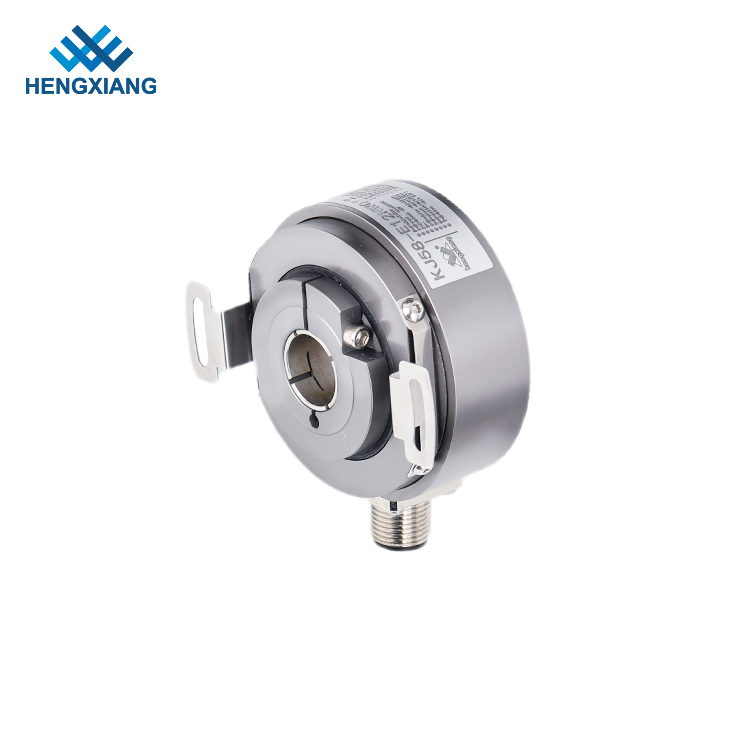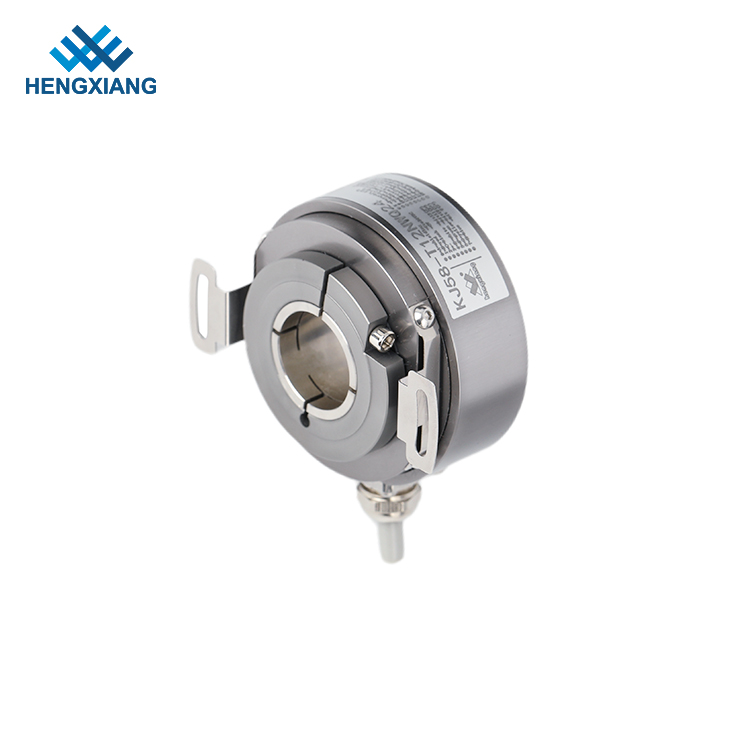For more information or to discuss your specific encoder needs, contact us today.
Views: 0 Author: Site Editor Publish Time: 2025-02-27 Origin: Site








In the world of motion control and automation, encoders are integral components that provide feedback on the position, velocity, and direction of moving parts. Among the different types of encoders, absolute encoders stand out due to their ability to retain precise position information even in the event of a power loss. This article will explain the working principle of absolute encoders, explore their applications, and highlight key considerations when selecting them for industrial use.



An encoder is a device that translates mechanical motion into electrical signals that can be interpreted by a control system, such as a PLC (Programmable Logic Controller) or a computer. Encoders are used in a wide range of applications, from simple systems like rotary switches to complex automation processes in industries such as robotics, aerospace, and automotive.
The two primary types of encoders are:
Incremental Encoders: These encoders generate pulses as the shaft rotates, with each pulse corresponding to a specific movement increment. They require a reference point to establish position, and they lose position information if power is lost.
Absolute Encoders: Absolute encoders provide a unique digital code for each distinct position, ensuring accurate position tracking even after power interruptions. This feature makes them particularly valuable in applications where precision and reliability are crucial.
In this article, we will focus on the working principles, advantages, and applications of absolute encoders.
Unlike incremental encoders, absolute encoders provide a unique code for each position, and this code is maintained even when power is switched off. To understand the working principle, it's essential to break down the internal mechanism of an absolute encoder.
At the heart of an absolute encoder is a code disc or rotor. This disc has a series of patterns or marks arranged in concentric circles or radial lines. These patterns encode position information, which is interpreted by the encoder’s sensor. The sensor reads the position of the marks as the disc rotates, generating a unique digital code for each angular position.
Absolute encoders can use multiple tracks on the code disc, with each track representing a different binary weight (such as 1, 2, 4, 8, etc.). These tracks are read simultaneously, generating a unique binary number that corresponds to a specific position. The higher the number of bits in the encoder’s code, the greater the resolution and accuracy of position tracking.
For example:
A single-turn absolute encoder uses a single revolution of the code disc to generate a unique position code.
Multi-turn absolute encoders use additional tracks or multiple discs to count turns, providing position feedback over several revolutions.
One of the key advantages of absolute encoders is their non-volatile memory, which allows them to retain position information even if the system loses power. When power is restored, the encoder can resume tracking the exact position without the need for rehoming or recalibration, which is a significant advantage in many industrial applications.
High Precision: With the ability to provide a unique code for each position, absolute encoders deliver high-resolution feedback, ensuring precision in position tracking.
Non-Volatile Memory: They retain position data even after power loss, which makes them ideal for critical applications where downtime is costly.
Multi-Turn Capability: Absolute encoders can be designed to count multiple revolutions, allowing them to track position over several turns.
Durability: Due to their robust design, absolute encoders are well-suited for demanding environments and harsh conditions.
Absolute encoders are widely used across various industries, including manufacturing, robotics, aerospace, and automotive. Below are some of the most common applications of absolute encoders.
In industrial settings, absolute encoders are used for precise control in systems like conveyor belts, CNC machines, and packaging equipment. Their ability to maintain position data without power makes them ideal for automated systems that require continuous, uninterrupted operation.
Example: In a CNC machine, absolute encoders ensure that the tool's position is tracked accurately, even during power outages or machine resets.
In robotics, absolute encoders are crucial for tracking the position of robotic arms and joints. These encoders provide real-time feedback on the exact position of the robot, allowing for precise movements and improving overall performance.
Example: A robotic arm used in assembly lines needs to know its position at all times. An absolute encoder allows the robot to resume work without recalibration after a power interruption.
In the aerospace industry, absolute encoders are used in systems like flight control and navigation, where position feedback is vital. The need for high reliability and precision makes absolute encoders ideal for such applications.
Example: Absolute encoders are used in the position sensors of aircraft flaps and rudders, providing real-time data for flight control systems.
In automotive manufacturing and testing, absolute encoders are used in assembly lines and diagnostic equipment to measure the position and movement of various mechanical components. They are also used in electric vehicles (EVs) to track the position of components like steering and braking systems.
Example: Absolute encoders are used to track the rotation of the wheels during vehicle testing, ensuring precise measurement and diagnostics.
For vertical movement systems like elevators and escalators, absolute encoders provide real-time position feedback, ensuring smooth and accurate control of the lift's position. The ability to maintain position data, even during power loss, is critical for passenger safety and system reliability.
Example: An absolute encoder ensures that the elevator always stops at the correct floor, even if the system loses power temporarily.
When selecting an absolute encoder, several factors must be considered to ensure it meets the specific needs of your application. Below are some key considerations:
The encoder resolution determines the level of precision the encoder can provide. For applications that require high accuracy, such as CNC machines or robotic arms, a high-resolution absolute encoder is essential. Encoder resolution is typically measured in bits for absolute encoders. A 12-bit encoder offers 4096 unique positions per revolution, while a 16-bit encoder offers 65536 positions per revolution.
Single-turn absolute encoders are suitable for applications where the object or part only rotates through one revolution. However, if the application requires the tracking of multiple turns or rotations, multi-turn absolute encoders are more appropriate. Multi-turn encoders can track up to several thousand revolutions, providing detailed feedback over extended periods of motion.
In harsh industrial environments, absolute encoders need to be durable and resistant to factors such as temperature extremes, moisture, dust, and vibration. Choosing an encoder with appropriate ingress protection (IP) ratings and rugged construction ensures reliable performance in challenging conditions.
Absolute encoders come with different output signal options, such as analog, digital, and serial communication formats like SSI (Synchronous Serial Interface) or CANopen. Choosing the correct output signal is crucial for ensuring compatibility with your system’s control unit.
Q1: How does an absolute encoder work?
A1: An absolute encoder works by assigning a unique binary code to each position of the shaft or disc. This code is read by a sensor and transmitted to the control system, which can accurately track position even after a power failure.
Q2: What is the difference between a single-turn and multi-turn absolute encoder?
A2: A single-turn absolute encoder tracks position within one full revolution (360 degrees), while a multi-turn absolute encoder can track multiple revolutions, making it ideal for applications where continuous rotation is required.
Q3: What are the main advantages of using absolute encoders?
A3: The primary advantages of absolute encoders include their high precision, ability to retain position data after power loss, and versatility in both single-turn and multi-turn applications.
Q4: Where are absolute encoders commonly used?
A4: Absolute encoders are used in industrial automation, robotics, aerospace, automotive testing, and other applications where position tracking is critical.
Q5: How do I select the right absolute encoder for my application?
A5: When selecting an absolute encoder, consider factors such as resolution, environmental conditions, whether a single-turn or multi-turn encoder is needed, and the type of output signal required for compatibility with your system.
Shanghai Hengxiang Optical Electronics Co., Ltd. is a leading manufacturer of high-precision encoders and motion control solutions. With over 23 years of experience in the industry, we specialize in providing high-quality, customized encoders to meet diverse industrial needs. Our products are certified with CE-ATC, ISO, and QMS standards, ensuring top-tier quality and performance.
For more information or to discuss your specific encoder needs, contact us today.